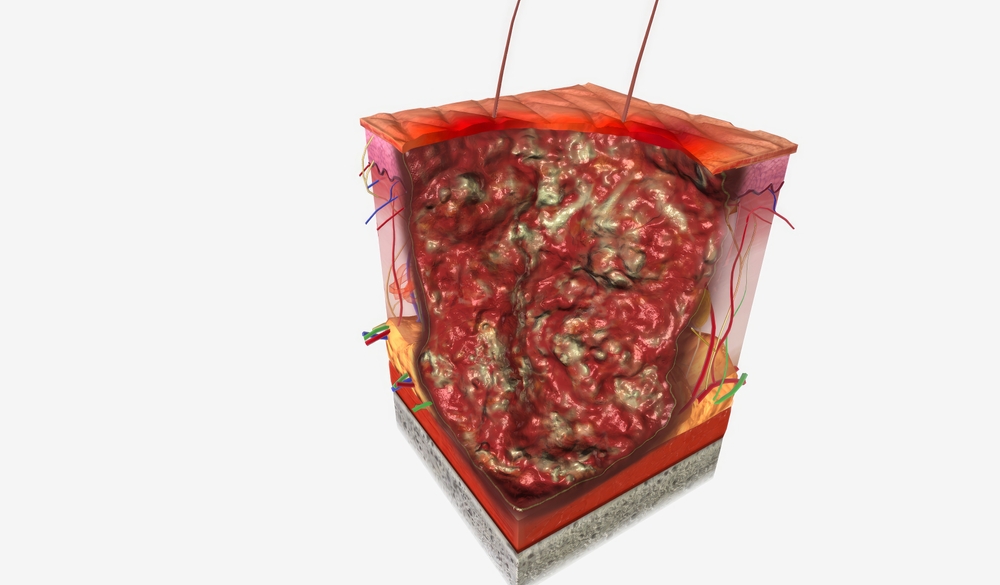If you have a patient with pyoderma gangrenosum (PG), also tell them about the Boehringer Ingelheim(BI) PG registry being conducted by United BioSource, LLC. As wound care practitioners know, PG is not well understood and there is currently no standardized therapy for its treatment.
The aim of the PG Patient Registry is to create a cohort of patients with PG to gain understanding of the disease, the treatment standards for PG in routine clinical care, the treatment outcomes, and to gain information about clinically meaningful endpoints for future research studies. The Pyoderma Gangrenosum (PG) Patient Registry will collect data on approximately 50-100 patients in the United States (US). Registry data collection will be based on clinical data documented in the electronic health records as part of routine clinical care in the diagnosis and management of PG. The project ends this summer, so tell your patients about it now!
Here is some background on this registry initiative that I obtained from the sponsor:
What is UBC?
UBC stands for United BioSource, LLC, and is the contract research organization partnering with Boehringer Ingelheim on this registry.
Who is funding the registry?
Boehringer Ingelheim is the sponsor of this PG patient registry.
Where will the data be kept and who will be handling it?
UBC and BI have partnered with Seqster, a data technology company, to collect and store de-identified and encrypted patient data for this registry. All data collected is stripped of any personally identifiable information in accordance with the HIPAA Privacy Rule’s de-identification standard.
How many patients are you planning to enroll? The PG patient registry will collect data on approximately 50-100 patients in the United States (US).
How do you get data from the EHR? Once an interested patient has signed the electronic, informed consent document, they are directed to create an account connecting their electronic medical records to this registry. The data elements to be abstracted from the electronic health record (EHR) are:
- Demographics (e.g., birthdate, gender, marital status, state of residence, race/ethnicity, smoking status)
- Information on the diagnosis of PG (e.g., date, symptoms, severity)
- Relevant medical history (e.g., systemic disease, immune system dysfunction, allergies, immunizations)
- Treatment history of PG and outcomes
- Recurrences (development of new ulcers after healing)
- Hospitalizations (e.g., vital signs, medications)
- Medical procedures (e.g., laboratory tests, examinations, medical imaging reports, biopsies)
- Comorbidities and related treatments
- Treatments (systemic and topicals)
- Wound care (debridement, compression garment antiseptic soaks, gauze, any dressings, any wound therapy, etc.)
- Healthcare Provider Information (e.g., encounters)
–Caroline
PG Registry_Outreach Flyer_v1.0_29May2024Resources:
- Here’s my Presentation on using PARACELSUS to Diagnose Pyoderma Without a biopsy! – Caroline Fife M.D.
- A Case of Pyoderma Gangrenosum Successfully Treated with Vilobelimab (the COVID Antibody) – Caroline Fife M.D.
- Pyoderma Gangrenosum, PASH, and Playing the Odds – Caroline Fife M.D.
- The Many Faces of Pyoderma Gangrenosum – This is Not a Pressure Injury – Caroline Fife M.D.
- Hidden in Plain Sight: Pyoderma Gangrenosum – Caroline Fife M.D.
- Pyoderma Gangrenosum (PG) Hiding in Plain Sight – Caroline Fife M.D.
- Pyoderma Gangrenosum (PG): Not So Rare, and When in Doubt, Take a History – Caroline Fife M.D.
- A New Review Article on Pyoderma Grangrenosum by Dr. Alex Loayza! – Caroline Fife M.D.

Dr. Fife is a world renowned wound care physician dedicated to improving patient outcomes through quality driven care. Please visit my blog at CarolineFifeMD.com and my Youtube channel at https://www.youtube.com/c/carolinefifemd/videos
The opinions, comments, and content expressed or implied in my statements are solely my own and do not necessarily reflect the position or views of Intellicure or any of the boards on which I serve.



